« It is the close association of a soil, a micro-climate and the vintner’s work. »

Terroir, with its specific soil, subsoil, sun exposure and vine training adopted by the vintner, will bring out the difference between simple varietal wines and more complex terroir wines.
Located on the fractal zone which gave birth to the Rhine Valley, Alsace has a deeply varied geological diversity.
Sheltered from oceanic influences by the Vosges mountains, the vineyard of Alsace has a semi-continental climate, with warm and dry summers and autumns. Rainfall is one of the lowest in France.
Spread on 7 villages, our vineyard is made up of 60 parcels, stretching out on 14 hectares. These extremely varied soils (clayey limestone, sandy granite, alluvial gravel, marly limestone soil…) make it possible to choose the adequate terroir for each grape variety : this will allow the full expression of the fruit first, then the terpenic aromas linked to the terroir.
LIEUX-DITS
Each winegrowing village of Alsace has a number of ‘lieux-dits’ (places with a specific name, usually linked to local history or geological composition of the soil), known since the Middle Ages.
NEUFELD Wintzenheim
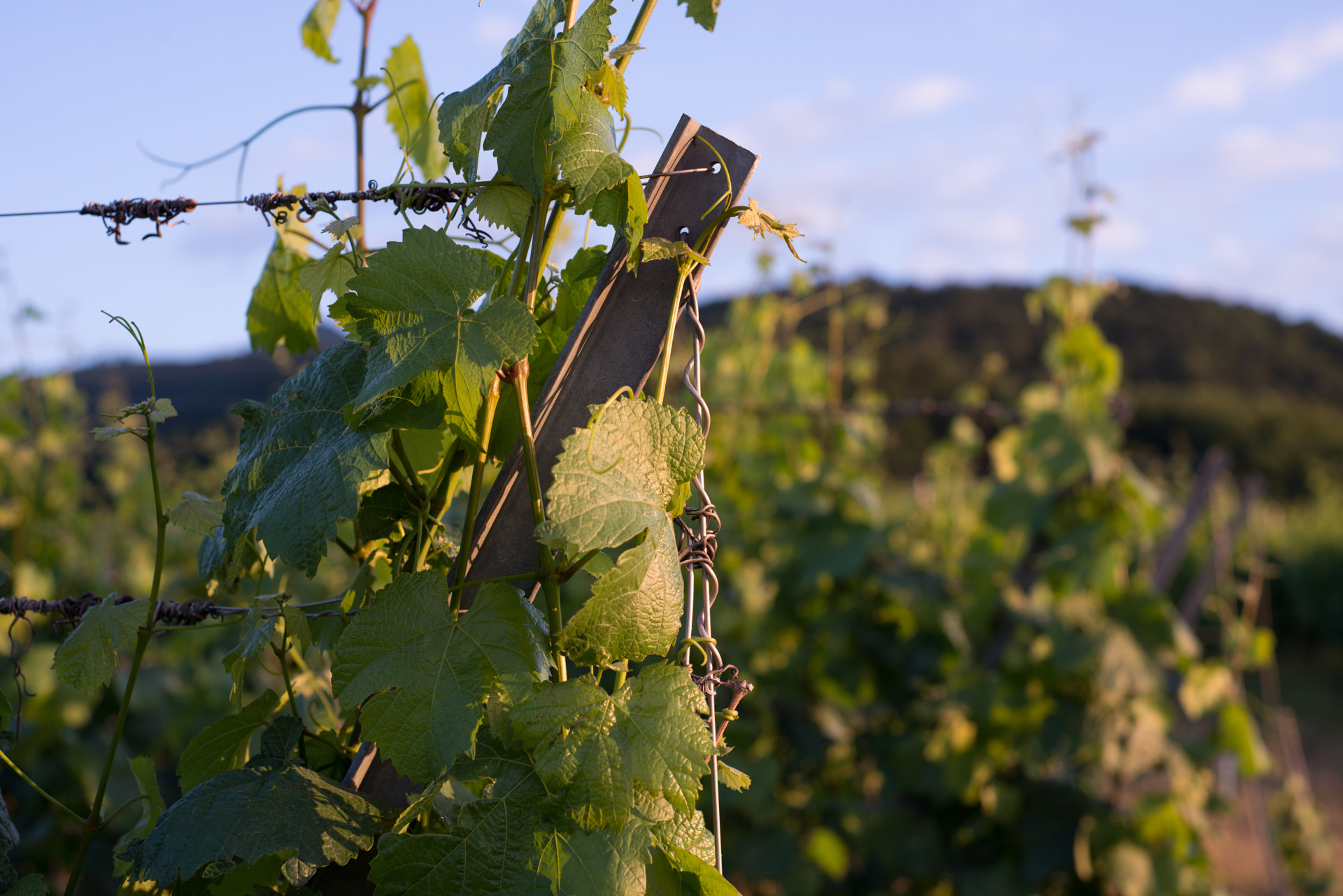
| TYPE OF SOIL | Clay and sandstone | |
| CEPAGES | Riesling |
An omnipresent saline touch reveals the flavours, while the minerality that develops with more intensity over time, underlines the dishes with firmness and elegance.
ROSENBERG Wettolsheim
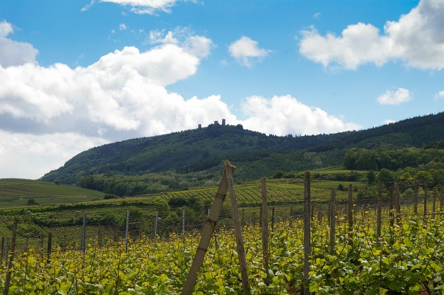
| TYPE OF SOIL | East-oriented slope , Clayey limestone soil mainly, with rock outcrop on the ridge | |
| CEPAGES | Pinot Blanc and Pinot Gris |
The Lieu-dit Rosenberg is, a terroir which extends the Grand Cru Pfersigberg, giving to the wine fullness and power.
CLOS DU VICUS ROMAIN
In 1969, while doing excavation work on the Grand Cru HENGST parcels, Aimé Stentz discovered the foundations of a Roman stop-over gite.
Being an archeology enthusiast, he not only authorized the diggings but went so far as to actively take part in them.
The excavations over, he agreed to the foundation works staying in the open. He also concured to their strengthening and planning out for the preservation of the site, under the regulation of the Monuments Historiques.
Etienne and Louis Stentz created the « Cuvée du Vicus Romain » in 1994 for the 25th anniversary of the discovery of the Clos.
Unique on the Wine Road of Alsace, the site has been listed as a Monument Historique since 1970.
Two buildings are clearly visible : a stop-over hostel and a lookout post.
GRANDS CRUS
Today, 51 terroirs delimited according to strict geological and climatic criteria make up the mosaic of Alsace’s Grands Crus.
Situated on the sub-Vosgian hills, between 200 and 400 metres above sea level, and ideally exposed, the Grands Crus benefit from maximum solar radiation and an extraordinary diversity of soils.
These advantages, combined with a judicious choice of grape varieties best suited to each terroir, favour a slow and prolonged ripening of the grapes and the emergence of aromas of great finesse.
GRAND CRU STEINGRÜBLER Wettolsheim
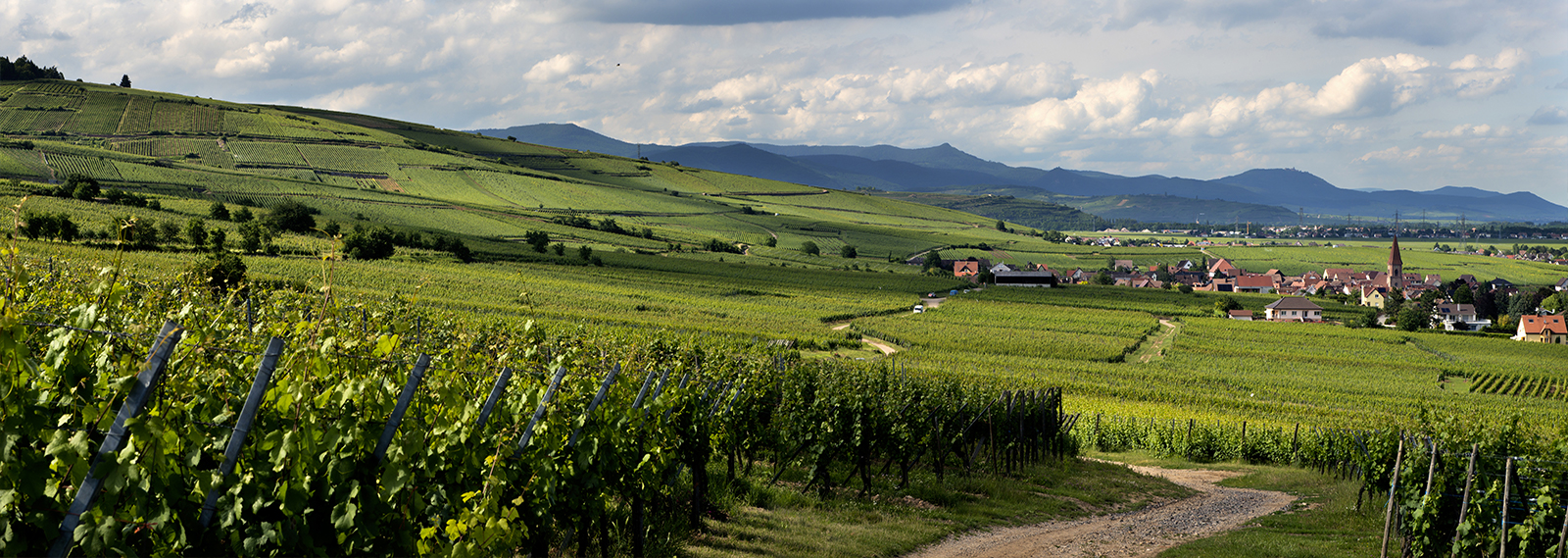
| TYPE OF SOIL | Marl and limestone soil (grey compact limestone and Muschcelkalk very deep down) | |
| PLACE | Wettolsheim | |
| EXPOSITION | South-East oriented slopes | |
| ALTITUDE | 300m |
Taking its name from the stone (pierre), this terroir pays tribute to the mineral world due to the numerous and inextricably entangled sorts hidden inside.
The subsoil is rich in muschelkalk limestone at the bottom of the hill
This terroir is distinguished by its dense and delicious concentration, admirably balanced by a generous and firm freshness which integrates into the mouthfeel. This acidity brings succulence to the fleshy matter and often expresses exotic, fresh or candied fruits.
GRAND CRU HENGST Wintzenheim
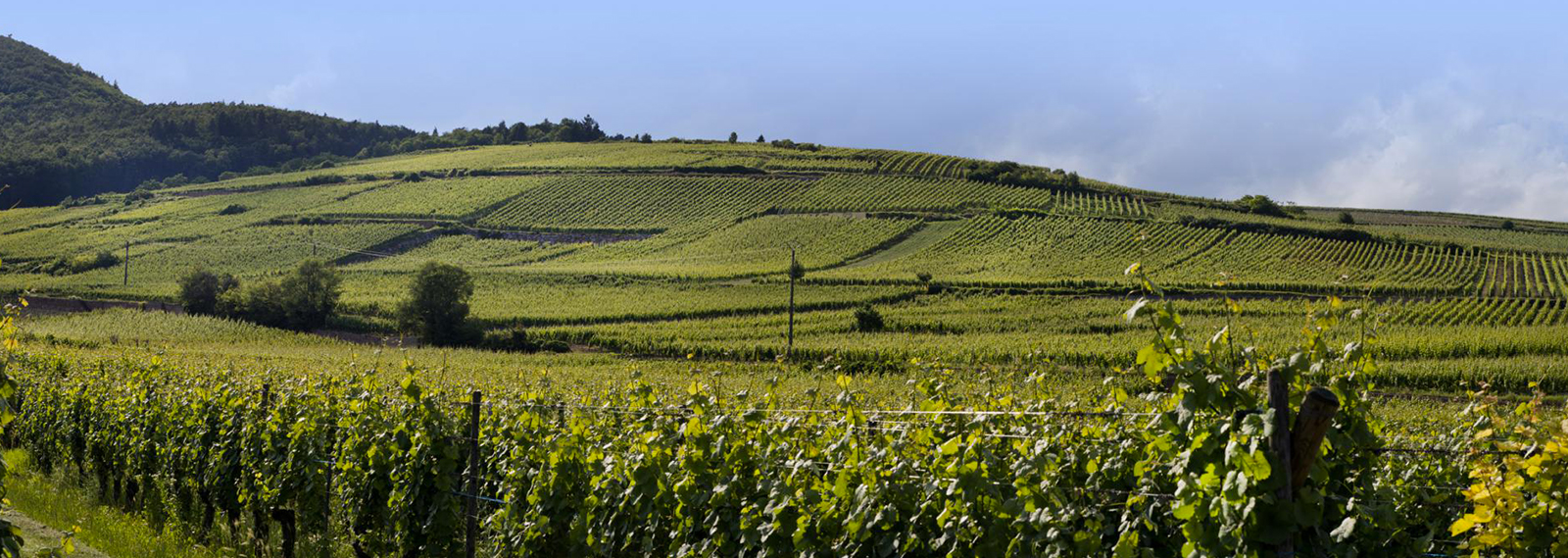
| TYPE OF SOIL | Marl and limestone soil (oligocene limestone conglomerate) | |
| PLACE | Wintzenheim | |
| EXPOSITION | South, South-East oriented hill | |
| ALTITUDE | 300m |
This soil is homogeneous, rich in clay 1.2m deep at least with an important proportion of oligocene limestone conglomerate.
It is draining the water when it rains and holding it back in dry years thanks to clayey layers.
Young, the Hengst wines present a very expressive character. Bottle ageing softens them, completes the maturation process, rounds them off.
The Hengst Grand Cru wines are powerful, complex, dense with ripe acidity on the finish. These have great keeping potential as they develop more expression with age. (10 to 15 years, or even more).
GRAND CRU SOMMERBERG Niedermorschwihr
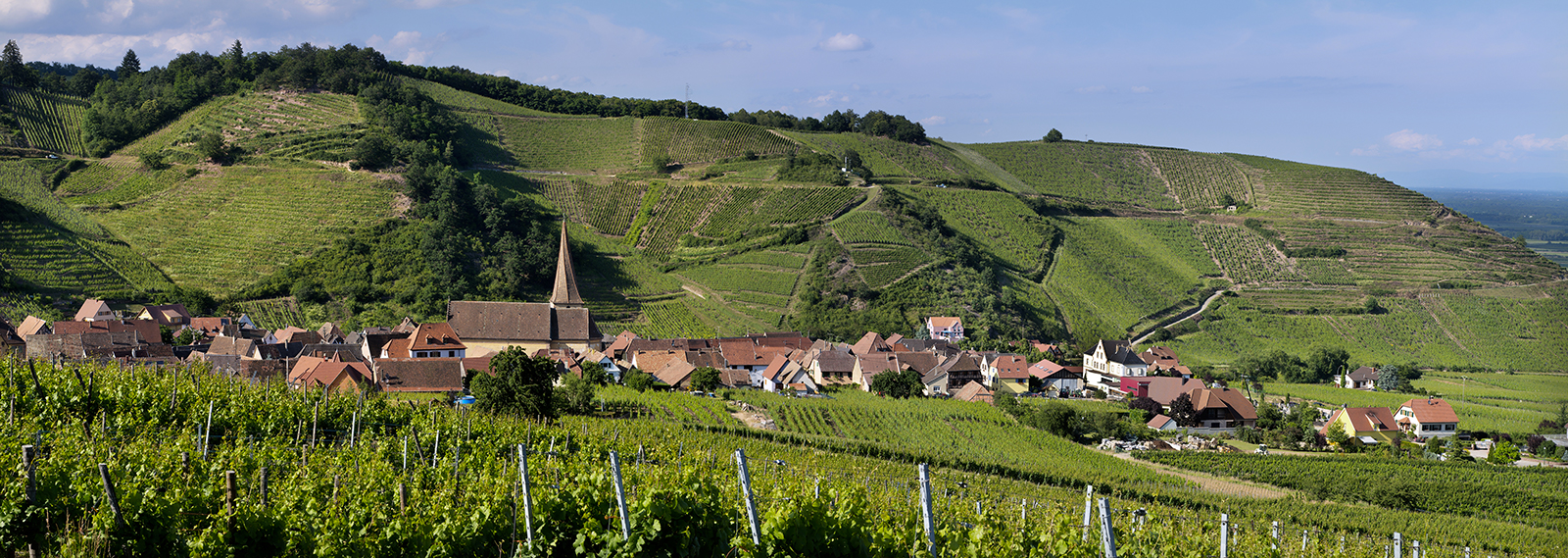
| TYPE OF SOIL | Granite (homogeneous subsoil composed of crumbled two-mica granite, also called granite of Turckheim) | |
| PLACE | Niedermorschwihr | |
| EXPOSITION | South oriented steep slopes (45 % of inclination) | |
| ALTITUDE | 400m |
The subsoil made of the so-called Turckheim granite with black and white micas, is deeply weathered, giving rise to a coarse sandy crystalline scree.
The soil is rich in mineral elements, and ideal for vine growing.
This terroir produces the most prestigious Rieslings.
GRAND CRU FLORIMONT Katzenthal
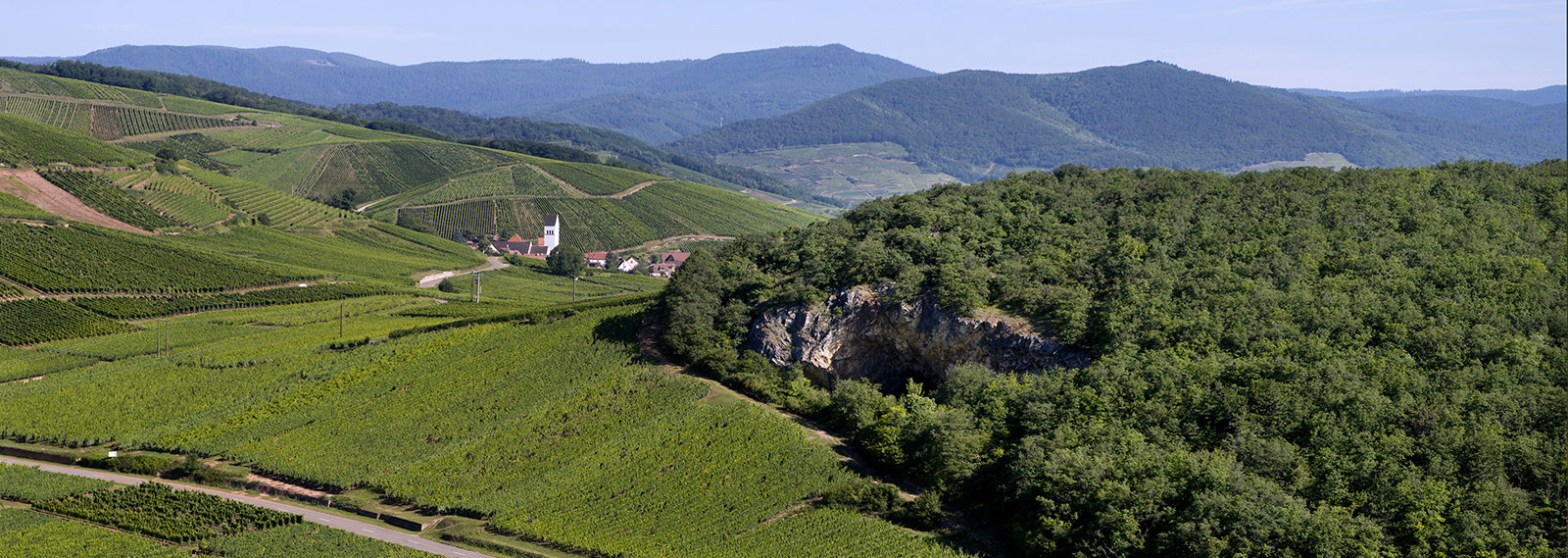
| TYPE DE SOL | Marl and limestone | |
| PLACE | Katzenthal | |
| EXPOSITION | South | |
| ALTITUDE | 260m |
A sun-drenched terroir with limestone soil spotted with fossils.
Wines from this terroir are generous and fatty, sustained by ripe acidity with citrus fruit aromas and great elegance.
The dense structure found in Florimont wines is balanced out by an acid backbone, providing its prestige.
GRAND CRU PFERSIGBERG Wettolsheim
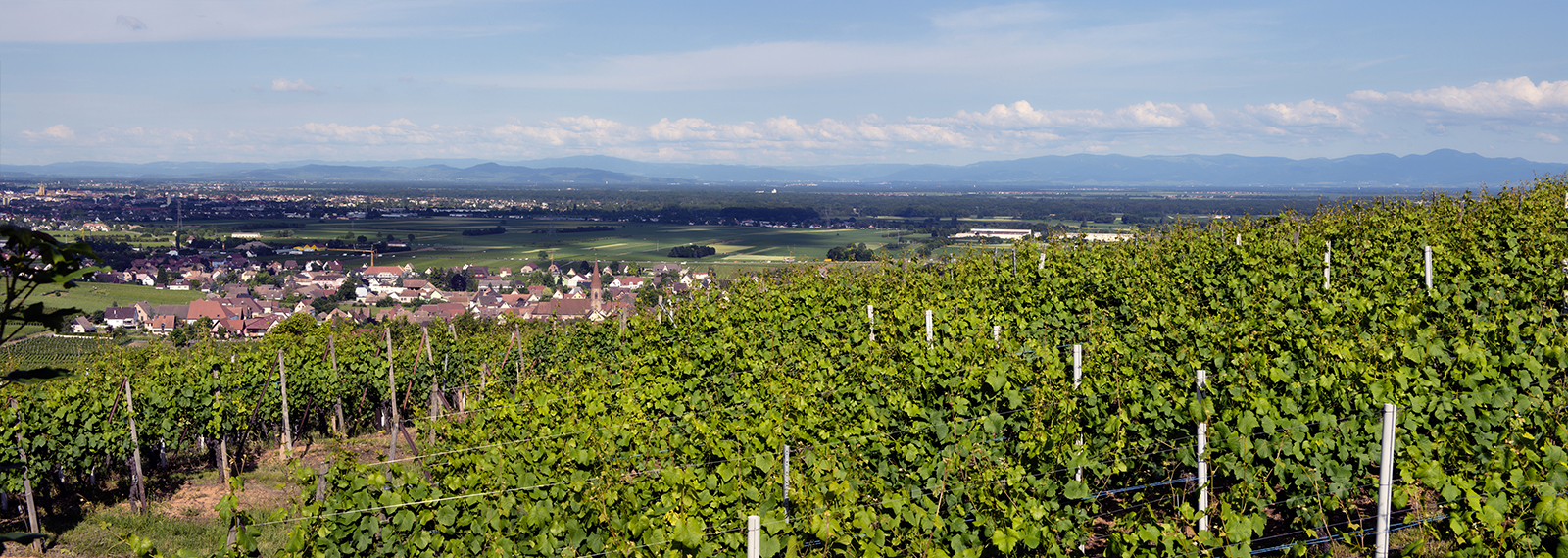
| TYPE OF SOIL | Marl and limestone | |
| PLACE | Eguisheim and Wettolsheim | |
| EXPOSITION | East, South-East |
« Pfersigberg » means « peach hill » and is protected from oceanic influence by an impressive massif of mountains.
The Pfersigberg’s slopes face east-south-east and are particularly well-exposed to the sun.
The stony conglomerate subsoil of the hillside is formed of various limestone pebbles : very hard grey Muschelkalk (mid-Trias) and less resistant yellowy mid-Jurassic. The limestone-marl soil issued from this bedrock can be classifed as calci-magnetic, with high limestone content, thus of rendzine type with an alcaline pH of 7,7 to 8.
In this type of clay-silt textured soil, water-retention is average, and so the soil colour and low humidity favourise the radiance of intense heat, which leads to early ripening of the grapes.
Additional indications
« Vendanges Tardives » et « Sélection de Grains Nobles »
« Late harvest » and « Noble rot grapes »
Two rare and prestigious mentions can complete the appellations Alsace Grand Cru: »Vendanges Tardives » and « Sélection de Grains Nobles ». The wines bearing these mentions are harvested in over-ripeness, during very good years, and for the Selections de Grains Nobles, by sorting of the grapes affected by noble rot (Botrytis cinerea), only the most dried berries being preserved.